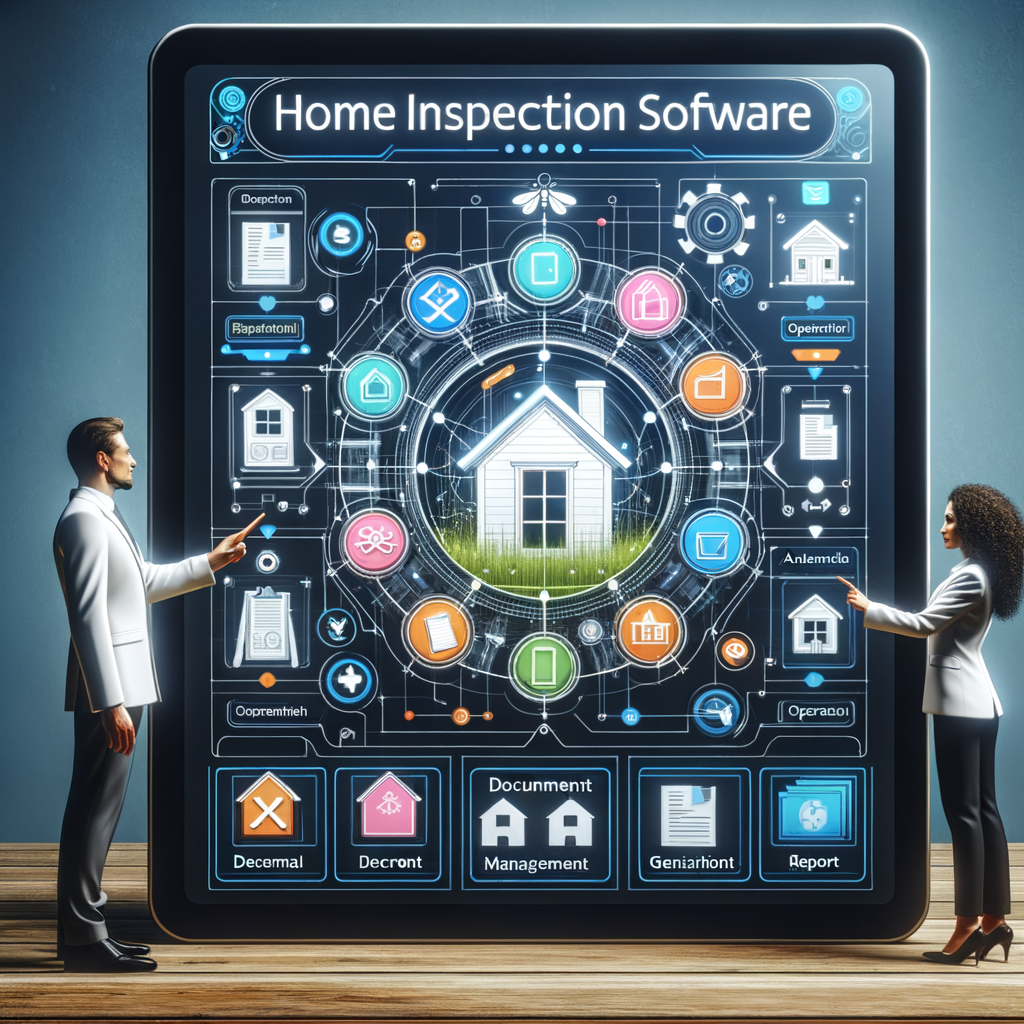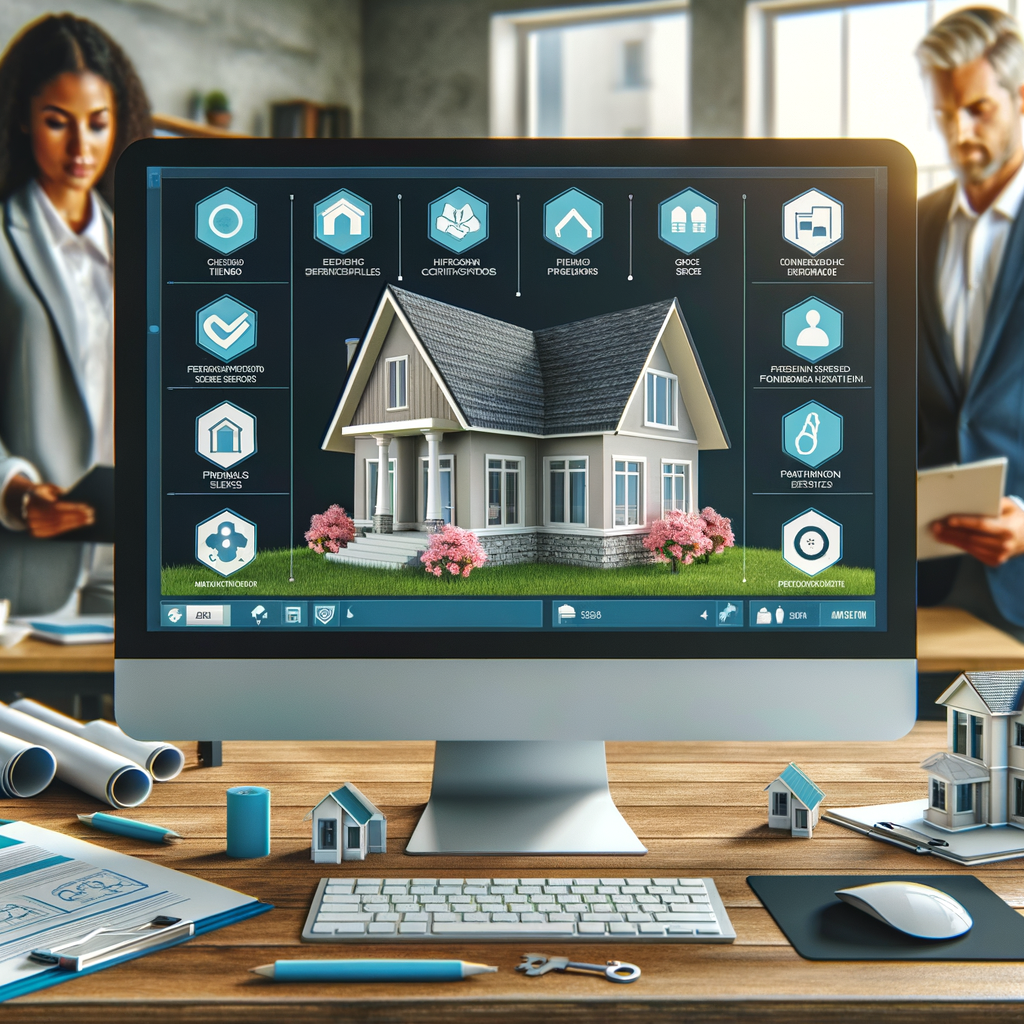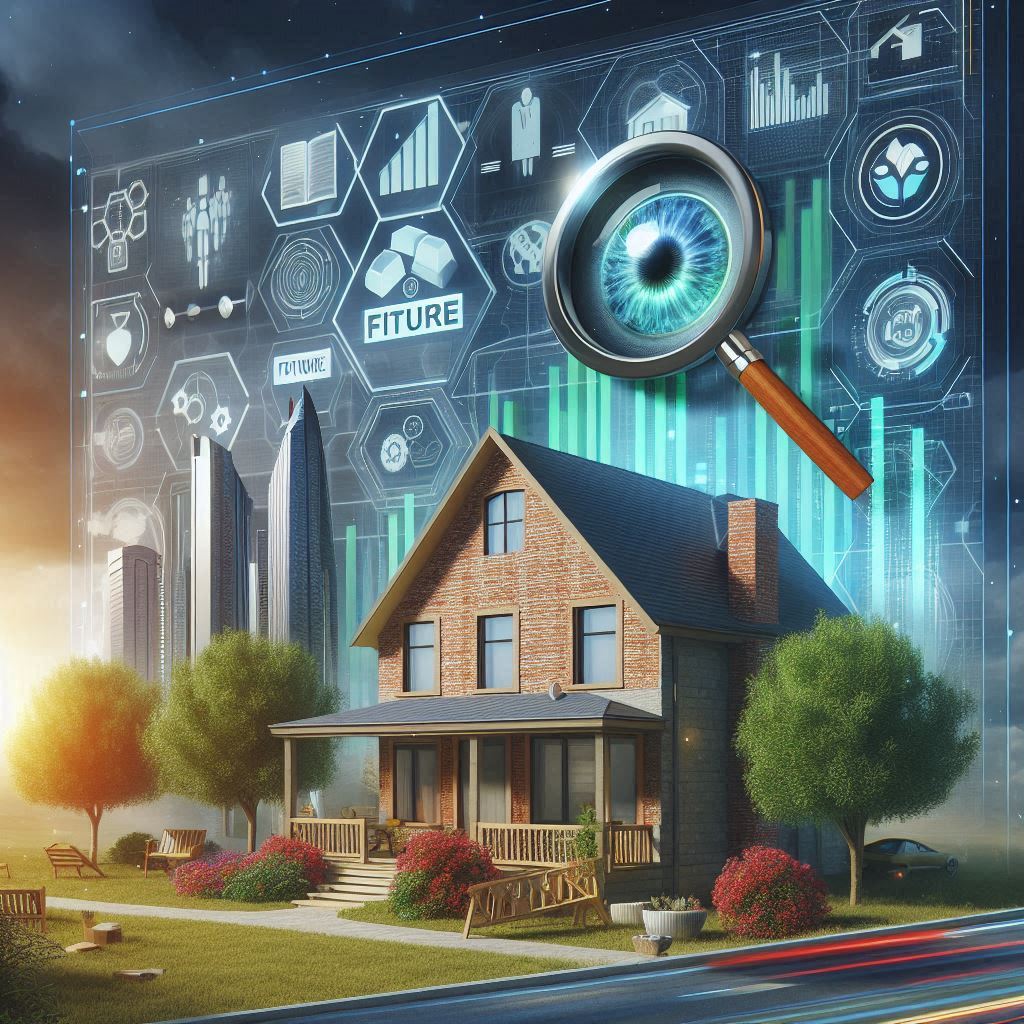User-friendly home inspection software for professionals is a tool designed to streamline and simplify the process of conducting home inspections. It provides professionals, such as home inspectors and real estate agents, with an efficient way to collect data, generate comprehensive reports, and collaborate with clients. This software typically features an intuitive interface, customizable templates, and integration capabilities to enhance productivity and accuracy in the inspection process. With user-friendly home inspection software, professionals can save time, reduce paperwork, and deliver high-quality reports that meet industry standards.

Benefits of User-Friendly Home Inspection Software for Professionals
Home inspection professionals are faced with the daunting task of thoroughly evaluating a property for potential issues and risks. This requires meticulous attention to detail, accurate documentation, and efficient communication with clients. In order to streamline this process and enhance productivity, many professionals have turned to user-friendly home inspection software.

One of the primary benefits of using user-friendly home inspection software is its ability to simplify the inspection process. Gone are the days of carrying around a stack of paper forms and relying on handwritten notes. With software designed specifically for home inspections, professionals can easily input data directly into their device, eliminating the need for manual paperwork. This not only saves time but also reduces the risk of errors that can occur during transcription.
Furthermore, user-friendly home inspection software offers customizable templates that cater to specific needs and requirements. Professionals can create checklists tailored to different types of properties or customize templates based on individual preferences. This level of customization ensures thoroughness in inspections while still allowing flexibility in documenting unique findings.
The convenience factor cannot be overlooked when discussing the benefits of user-friendly home inspection software. By digitizing all aspects of the inspection process, professionals can access important information anytime, anywhere from their devices. Whether they are onsite conducting an inspection or in their office preparing reports, all data is readily available at their fingertips.
In addition to increased convenience, user-friendly home inspection software also enhances collaboration among team members and clients alike. Multiple users can simultaneously access and update information within a shared platform without fear of version control issues or miscommunication due to scattered paperwork. Furthermore, real-time sharing capabilities allow immediate transferal of completed reports between inspectors and clients—increasing efficiency while minimizing delays.
Another significant advantage offered by user-friendly home inspection software is improved accuracy in reporting findings. The use of digital technology eliminates illegible handwriting or missing entries frequently encountered with traditional methods. Moreover, pre-set response options within templates reduce inconsistencies in terminology used across different inspectors’ reports—ensuring clarity and standardization in the information provided to clients.
Cost savings are an additional benefit associated with user-friendly home inspection software. By eliminating the need for physical paperwork and manual data entry, professionals can significantly reduce administrative costs related to printing, storage, and personnel. Moreover, the efficiency gained through streamlined processes allows professionals to conduct more inspections in less time—increasing their revenue potential.
Finally, user-friendly home inspection software provides a professional image that instills confidence in clients. The use of modern technology demonstrates a commitment to accuracy, professionalism, and staying up-to-date with industry advancements. Clients are reassured knowing that their property is being thoroughly inspected using state-of-the-art tools and techniques.
conclusion
user-friendly home inspection software offers numerous benefits for professionals in this field. From simplifying the inspection process to improving collaboration and accuracy while reducing costs—this digital tool enhances productivity and efficiency throughout all stages of property evaluation.
Adopting such software not only saves time but also helps establish a professional image that inspires trust among clients. With these advantages at hand, it’s no wonder why more professionals are turning towards user-friendly home inspection software as an indispensable tool in their trade.
How User-Friendly Home Inspection Software Streamlines the Inspection Process
The home inspection process can be a complex and time-consuming task that requires meticulous attention to detail. In order to streamline this process, professionals in the field have turned to user-friendly home inspection software. This software offers a range of features and benefits that make the job easier and more efficient.

One of the key advantages of using user-friendly home inspection software is its ability to automate various tasks. With just a few clicks, inspectors can generate professional reports that include detailed descriptions, photographs, and even video footage. This not only saves time but also ensures accuracy in documenting findings.
Furthermore, user-friendly home inspection software enables professionals to easily access previous reports and data on specific properties. This feature allows inspectors to quickly compare current findings with past inspections, identifying any changes or issues that may have arisen since the last visit. Having historical data readily available ensures thoroughness in assessments and provides valuable insights for clients.
In addition to automating report generation and providing access to historical data, user-friendly home inspection software often includes customizable templates that allow inspectors to tailor reports according to their specific needs. Whether it’s adjusting sections or adding personalized content, these templates provide flexibility while maintaining professionalism.
Another important feature offered by user-friendly home inspection software is its ability to sync with mobile devices such as smartphones or tablets. Inspectors can now complete inspections on-site without having to rely on pen-and-paper methods or cumbersome laptops. Mobile compatibility makes it possible for professionals in the field – who are frequently moving from one property to another –to easily input data directly into their device through intuitive interfaces specifically designed for ease-of-use on smaller screens.
The synchronization capabilities do not end there; some user-friendly home inspection software also allows multiple team members within an organization to collaborate seamlessly on inspections remotely. Through cloud-based systems, team members can share real-time updates as they work together from different locations – further enhancing productivity levels while ensuring consistency across inspections.
It is worth mentioning that user-friendly home inspection software often comes with built-in libraries of codes, standards, and regulations specific to different regions. This eliminates the need for inspectors to spend time researching or referencing external resources. By having this information readily available within the software itself, professionals can confidently ensure compliance and accuracy in their reports.
Moreover, user-friendly home inspection software usually provides support for various types of inspections such as pre-purchase inspections, maintenance assessments, or pest control examinations. Professionals can easily navigate through different sections according to the type of inspection being conducted – further enhancing efficiency while maintaining a comprehensive approach.
conclusion
user-friendly home inspection software has revolutionized the way professionals in the field conduct their work. The automation of tasks such as report generation and access to historical data saves time and ensures accuracy. Customizable templates provide flexibility without compromising professionalism. Mobile compatibility allows on-site inspections with ease-of-use interfaces tailored for mobile devices. Collaboration features streamline teamwork remotely across multiple locations.
Built-in libraries provide quick access to codes and regulations specific to each region. Lastly, support for various types of inspections enhances efficiency while maintaining thoroughness throughout the process. With these features and benefits combined in one tool, it’s no wonder why user-friendly home inspection software has become an indispensable asset for professionals seeking a streamlined inspection process.
Features to Look for in a User-Friendly Home Inspection Software
Home inspections are a crucial part of the real estate industry. Professionals in this field understand the importance of thoroughly inspecting properties to ensure they meet safety and quality standards. However, conducting home inspections can be a time-consuming and complex task. That is where user-friendly home inspection software comes into play.

When searching for a user-friendly home inspection software, there are several features that professionals should look for. First and foremost, ease of use is key. A good software should have an intuitive interface that allows inspectors to navigate through different sections effortlessly. It should not require extensive training or technical knowledge to operate effectively.
Another important feature to consider is customization options. Every property has unique characteristics that need to be assessed during an inspection. Therefore, a user-friendly software should allow inspectors to tailor their reports according to specific needs. This could include adding custom fields or checklists relevant to different types of properties or regions.
Efficiency is also paramount when it comes to choosing the right software for home inspections. Professionals need a tool that helps them streamline their workflow and save time on repetitive tasks such as data entry or report generation. Look for a software that automates these processes by allowing users to import data from external sources or generate comprehensive reports with just a few clicks.
Integration capabilities are another aspect worth considering in user-friendly home inspection software options available on the market today. Inspectors often rely on various tools such as cameras, infrared devices, or moisture meters during their assessments. The ideal software should seamlessly integrate with these devices, enabling users to capture images directly within the app and attach them easily alongside relevant notes in the final report.
Furthermore, collaboration features can greatly enhance efficiency in teams conducting multiple inspections simultaneously or across different locations. Look for a software solution that enables easy sharing of information between team members without compromising security measures protecting sensitive client data.
Data management and storage are critical considerations when selecting suitable home inspection software solutions too – especially given recent developments around data privacy and security. Ensure that the software complies with relevant regulations, provides secure storage options, and offers regular backups to protect against potential loss or corruption of important inspection records.
Last but not least, a user-friendly home inspection software should also offer excellent customer support. In case users encounter any issues or have questions about using the software efficiently, it is essential to have prompt assistance available from knowledgeable professionals who can help resolve these matters swiftly.
conclusion
finding a user-friendly home inspection software for professionals requires careful consideration of several key features. Ease of use, customization options, efficiency in workflow automation and report generation are all crucial aspects that contribute to an effective solution. Integration capabilities with other devices and collaboration features facilitate seamless team interactions during inspections.
Additionally, robust data management and storage ensure compliance with regulatory requirements while protecting sensitive information. Lastly, reliable customer support ensures users receive timely assistance when needed. By prioritizing these features during the selection process, professionals can choose a suitable tool that enhances their productivity and effectiveness in performing home inspections efficiently.
Tips for Choosing the Right User-Friendly Home Inspection Software for Your Business

User-friendly home inspection software has become an essential tool for professionals in the field. As technology continues to advance, these software programs offer a range of features that can greatly streamline the home inspection process. However, with so many options available on the market, it is important to carefully consider which user-friendly home inspection software is best suited for your business needs.
One important factor to consider when choosing user-friendly home inspection software is its ease of use. After all, the purpose of such software is to simplify and expedite the home inspection process. Therefore, selecting a program that is intuitive and easy to navigate is crucial. Look for software that offers a clean interface and provides clear instructions on how to perform different tasks. Additionally, seek out programs that offer customizable templates and checklists so you can tailor them to fit your specific workflow.
Another aspect worth considering is compatibility with different devices and operating systems. With professionals increasingly relying on mobile devices in their work, it is imperative that the chosen software supports multiple platforms such as iOS and Android. This ensures flexibility in accessing information while conducting inspections or generating reports from various locations.
Integration capabilities should also be taken into account when selecting user-friendly home inspection software. Ideally, you want a program that seamlessly integrates with other tools you use regularly within your business operations such as accounting or customer relationship management (CRM) systems. Integration eliminates duplicate data entry across different platforms and enhances overall efficiency by centralizing information flow.
In addition to usability and integration capabilities, it’s crucial to assess the level of technical support offered by potential user-friendly home inspection software providers before making a decision. Even if a program appears straightforward at first glance, issues may arise during implementation or regular usage that require assistance from knowledgeable support staff. Look for providers who offer reliable customer service through various channels like phone calls or live chat.
Furthermore, security measures implemented by the user-friendly home inspection software provider should be thoroughly evaluated before committing to their product offering. Since home inspections involve handling sensitive client data, it is vital to choose software that employs robust encryption methods and complies with industry standards such as General Data Protection Regulation (GDPR). Regular software updates and patches should also be provided to ensure protection against emerging threats.
Finally, cost considerations cannot be overlooked when choosing user-friendly home inspection software for your business. While price should not be the sole determining factor, it is important to carefully assess the value provided by each program compared to its cost. Take into account factors such as licensing fees, training costs, ongoing support charges, and any additional features that may incur extra expenses. A careful evaluation of these aspects will help you find a solution that aligns with your budget without compromising on quality.
conclusion
selecting user-friendly home inspection software requires careful consideration of several key factors including ease of use, compatibility with different devices and operating systems, integration capabilities with existing tools, availability of technical support services, implemented security measures, and overall cost. By evaluating these elements thoroughly before making a decision, professionals can confidently choose the right user-friendly home inspection software that best fits their business needs while maximizing productivity in their daily operations.
Case Studies: Successful Implementation of User-Friendly Home Inspection Software by Professionals
Introduction
Home inspections are a crucial part of the real estate industry. They provide potential buyers with valuable information about the condition of a property and help them make informed decisions. In recent years, there has been a shift towards using technology to streamline the home inspection process. One such technological innovation is user-friendly home inspection software, which has been successfully implemented by professionals in various case studies.

Case Study 1: Jones & Associates Home Inspections
Jones & Associates Home Inspections is a well-established firm that conducts hundreds of inspections every year. Prior to implementing user-friendly home inspection software, their team relied on traditional pen-and-paper methods, resulting in cumbersome documentation processes and delays in generating reports for clients.
However, after incorporating user-friendly software into their operations, Jones & Associates experienced significant improvements. The software provided them with customizable templates and digital checklists that simplified data collection during inspections. Furthermore, it allowed inspectors to input findings directly into handheld devices or tablets, eliminating the need for manual transcription.
The result was increased efficiency in conducting inspections and generating comprehensive reports promptly. Clients were pleased with the accuracy and professionalism exhibited by Jones & Associates through this implementation.
Case Study 2: Smith Real Estate Agency
Smith Real Estate Agency faced challenges in coordinating their team’s efforts when conducting simultaneous property inspections. The lack of synchronization often led to confusion and errors in documentation.
To overcome these obstacles, they adopted user-friendly home inspection software designed specifically for teams working collaboratively on multiple projects simultaneously. This cloud-based solution enabled inspectors to work together seamlessly by sharing live updates on their findings across different locations.
With real-time access to all relevant information within one central system, Smith Real Estate Agency reported improved coordination among team members during site visits. Consequently, they significantly reduced errors caused by miscommunication while enhancing overall productivity throughout the organization.
Case Study 3: Johnson Property Management Company
Johnson Property Management Company manages a vast portfolio of rental properties, which require regular inspections to ensure tenants’ safety and property maintenance. Prior to integrating user-friendly home inspection software, they relied on manual record-keeping methods that often led to misplaced or incomplete documentation.
The adoption of user-friendly software transformed their inspection process. The software offered features like automated reminders for routine inspections, digital photo storage capabilities, and comprehensive report generation in real-time.
As a result, Johnson Property Management experienced streamlined operations with improved accuracy in record-keeping and faster response times when addressing maintenance issues. Tenants appreciated the increased transparency as they received detailed reports promptly after each inspection.
Conclusion
These case studies highlight the successful implementation of user-friendly home inspection software by professionals in various sectors of the real estate industry. From single inspectors to teams working simultaneously on multiple projects, this technological innovation has proven its worth time and again.
The integration of such software has resulted in increased efficiency during inspections, enhanced coordination among team members across different locations, and improved accuracy in generating comprehensive reports for clients. Furthermore, it has simplified data collection processes while providing better organization and accessibility for future reference.
Ultimately, these successful case studies serve as testaments to the positive impact that user-friendly home inspection software can have on professionals within the real estate industry. As technology continues to advance at a rapid pace, more firms are likely to adopt similar solutions to streamline their operations further.
Common Challenges Faced by Professionals and How User-Friendly Home Inspection Software Helps Overcome Them
Professionals in the home inspection industry face numerous challenges on a daily basis. From managing multiple inspections to organizing vast amounts of data, their work can be both mentally and physically demanding. However, advancements in technology have paved the way for user-friendly home inspection software that helps professionals overcome these challenges effectively.

One of the common challenges faced by professionals is time management. Home inspectors often have a packed schedule, with numerous inspections lined up each day. This can make it difficult for them to keep track of appointments, prioritize tasks, and manage their time efficiently. Fortunately, user-friendly home inspection software provides a solution to this problem.
By utilizing scheduling features within the software, professionals can easily input all their upcoming appointments into one centralized system. The software then generates an organized calendar that allows inspectors to see at a glance what inspections are scheduled for each day or week. With reminders and notifications built into the software, professionals never miss an appointment or deadline again.
Another challenge faced by professionals is managing and organizing large amounts of data collected during inspections. Traditionally, inspectors would rely on paper-based systems or cumbersome spreadsheets to record findings from each inspection. Not only did this create unnecessary clutter but it also made retrieving information difficult when needed.
User-friendly home inspection software eliminates these problems by providing a digital platform where inspectors can enter all relevant information in real-time during an inspection itself. With customizable templates tailored specifically for different types of inspections (e.g., residential or commercial), users simply need to fill out the required fields without worrying about missing any essential details.
Furthermore, the software automatically organizes all entered data into easy-to-read reports that can be generated instantly upon completion of an inspection. This not only saves time but also enhances professionalism as clients receive comprehensive reports promptly after their property has been inspected.
Accuracy is another crucial aspect for professionals in the home inspection industry. Inaccurate or incomplete reports can lead to dissatisfied clients and potential legal issues. With user-friendly home inspection software, professionals can ensure the accuracy of their findings.
The software often includes built-in checks and balances that prompt inspectors to input necessary information and prevent them from moving forward with incomplete or inconsistent data. Additionally, features like voice-to-text capabilities reduce the chances of errors during data entry.
Furthermore, some user-friendly home inspection software incorporates advanced technology such as thermal imaging integration and 3D modeling tools. These features enable professionals to capture more accurate data during inspections and provide clients with a comprehensive understanding of any issues discovered.
conclusion
user-friendly home inspection software has revolutionized the way professionals in this industry overcome common challenges they face daily. From time management to data organization, these tools offer efficient solutions for busy inspectors. By utilizing such software, professionals can enhance their productivity while delivering accurate reports promptly to satisfied clients
Future Trends and Innovations in User-Friendly Home Inspection Software for Professionals
Home inspection professionals play a crucial role in the real estate industry by providing accurate assessments of residential properties. As technology continues to advance, there is a growing need for user-friendly home inspection software that can streamline the inspection process and improve efficiency. In this article, we will explore some future trends and innovations in user-friendly home inspection software for professionals.

One major trend that we can expect to see in the near future is the integration of artificial intelligence (AI) into home inspection software. AI has already proven its potential in various industries, and it is only a matter of time before it revolutionizes the way home inspections are conducted. By leveraging AI algorithms, home inspection software can automatically analyze data collected during inspections to identify potential issues or areas that require further investigation.
For example, AI-powered software could detect patterns or anomalies in electrical systems, plumbing networks, or structural components that may indicate underlying problems. This not only saves time for inspectors but also ensures more comprehensive inspections by identifying subtle issues that might be missed by human eyes alone.
Another innovation on the horizon is the use of augmented reality (AR) in home inspection software. AR overlays digital information onto real-world images or video streams captured by smartphones or tablets. In the context of home inspections, this means inspectors could use their mobile devices to view property details while simultaneously conducting an on-site assessment.
Imagine being able to point your device’s camera at a wall and instantly see information about its insulation quality or any hidden wiring behind it! AR-based tools could also provide virtual measurements and interactive checklists right within an inspector’s field of view—making their job much easier and more efficient.
Additionally, as smart homes become increasingly prevalent, so too will smart-home compatibility within home inspection software. With IoT (Internet of Things) devices becoming integral parts of many households—such as thermostats connected to Wi-Fi networks—home inspectors need software that can interact with and evaluate these devices.
For instance, future home inspection software could automatically connect to a smart thermostat and analyze its settings or energy usage patterns. Inspectors would then be able to provide more informed advice regarding energy efficiency or potential cost savings for homeowners.
Furthermore, cloud-based storage and collaboration features will likely become standard in user-friendly home inspection software. This means that inspectors can easily access their reports from any device with an internet connection, eliminating the need for physical paperwork and enabling real-time collaboration between team members.
By securely storing inspection data in the cloud, professionals can also ensure better data integrity and protection against loss or damage. Additionally, cloud-based platforms could facilitate seamless communication between inspectors, real estate agents, buyers, and sellers—a valuable aspect of modern property transactions.
conclusion
as technology continues to evolve at a rapid pace, user-friendly home inspection software is poised to revolutionize the industry. Artificial intelligence integration will enable automated analysis of collected data while augmented reality tools will enhance on-site assessments. Smart-home compatibility ensures comprehensive evaluations of modern houses equipped with IoT devices. Lastly, cloud-based storage and collaboration features facilitate efficient reporting and communication within the industry.
These future trends and innovations are set to transform how professionals conduct home inspections—resulting in greater accuracy, improved efficiency,and enhanced customer satisfaction throughout the process.In conclusion, user-friendly home inspection software for professionals is essential in streamlining and enhancing the efficiency of the inspection process.
It should be easy to navigate, offer customizable features, provide comprehensive reporting capabilities, and integrate seamlessly with other tools. By prioritizing user-friendliness, professionals can effectively conduct thorough inspections while saving time and improving overall productivity.